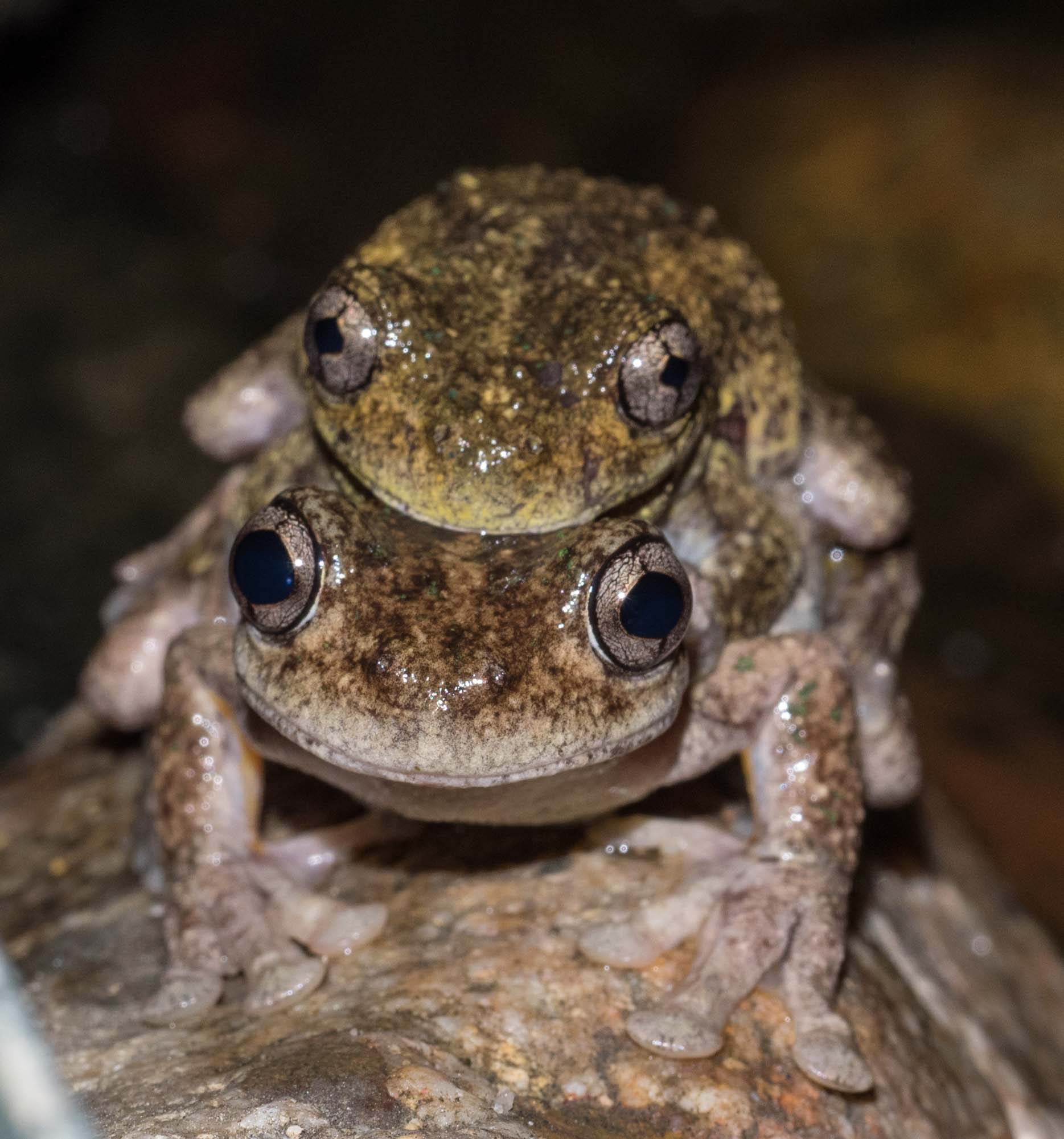Nightlife in the forest

The evenings are getting quite mild, now that we're in mid Spring. Two weeks ago, when we ventured outside in the evening, we only sighted a few wolf spiders out and about. But last night the forest was humming with life!
The maniacal cackling of the Emerald-spotted Tree Frogs (Litoria peronii) lured us outside in the first instance. We spotted half a dozen males calling loudly from rocks or logs surrounding the pond and at least two pairs were in amplexus - the amphibian love embrace.
You can hear the competing calls of several male frogs of this species in this video. The actual guy featured wasn't calling - the torch light seems to put them off their game.
It wasn't long before we sighted another frog species - the Clicking Froglet, Crinia signifera. This is a much smaller frog - only about half the size of the Emerald-spotted Tree Frog.
Like all of the other 4 species of frogs we've sighted to date on the block, the Clicking Froglet lives on the forest floor or in the trees. The adults only come to the pond to breed.
This video shows a mating pair of Emerald-spotted Tree Frogs and begins with a male of that species calling. But this is followed by calls of a pair of male Clicking Froglets. It's not hard to see how this species gets its common name!
The Forest Floor
While the pond and its surrounds was the source of most of the sounds, there was just as much activity happening elsewhere. We encountered lots of insects and spiders on the forest floor. Here is a selection of that life.
As usual, many wolf spiders - like this male Venatrix mckayi - were seen hunting for prey. These spiders are so superbly well camouflaged against the leaf litter that the only way to spot them is by their eyeshine. A head torch is a great way to pick this up. You can see by its missing leg that the Huntress has itself been hunted - probably by a larger wolf spider.
We sighted at least two different cockroach species on our late night ramble. Likely prey for wolf spiders, although this one is probably a tad large for the wolfie shown above. This is one of the Platyzosteria roaches - common name Litter Runners - that haven't yet been described at the species level.
This cockroach defends itself against wolf spiders - and in this case an inquisitive human - by lifting its abdomen to expose the pretty scary racing stripes on the back of its legs. Apparently, they can also emit a pungent odour, but we were spared that indignity on this occasion. Much maligned, cockroaches play a vital clean-up role in the forest ecosystem by eating dead wood fragments.
Another dweller of the leaf litter, the Common Eastern Litter Runner (Platyzosteria melanaria). This female is demonstrating the cockroach method of egg deposition, which is shared with mantids. The fertilised eggs are lined up, side by side in the oviduct and are coated with a secretion which hardens to a tough, protective case. The female drops this ootheca on the ground and the cockroach nymphs hatch out 7-8 weeks later.
I found this Forest Scorpion (Cercophonius squama) on the wall of the house, which it had scaled in search of prey. Without a house wall at its disposal, it would be searching in the leaf litter for something to eat. Scorpions hunt at night using that magnificent pair of pincers on their modified front pair of legs.
House Fly Screen
We find a host of insects - particularly beetles and moths - on the fly screens of our house at night. These fly in - attracted by the house lights - from various locations in the forest.
This very attractive Green Christmas Beetle (Xylonichus sp.) was a transient inhabitant of our bedroom flyscreen. We placed it in a more natural setting for this shot, but it actually lives in eucalyptus trees, feeding on the leaves and flowers.
To demonstrate that it is attracted to light, the beetle kept taking off and flying towards my head torch. I managed to get this photo of it lifting its elytra (wing coverings), just before it extended its dark red wings beneath.
One of the dozens of moth species we have encountered on our bathroom fly screen over the years - the Striated Bark Moth, Euphronarcha luxaria. Moth identification can be challenging as there are over 10,000 named Australian species to choose from. I got lucky with this one.
This huntsman spider Isopeda sp. falls into a different category to the other nighttime visitors to our fly screens. She is a full-time resident, hiding in the shutter housing over the window during the day and venturing out at night to feast on a good selection of prey items on the fly screen. Measuring 9 cm from leg tip to leg tip, she is apparently a successful hunter.
















